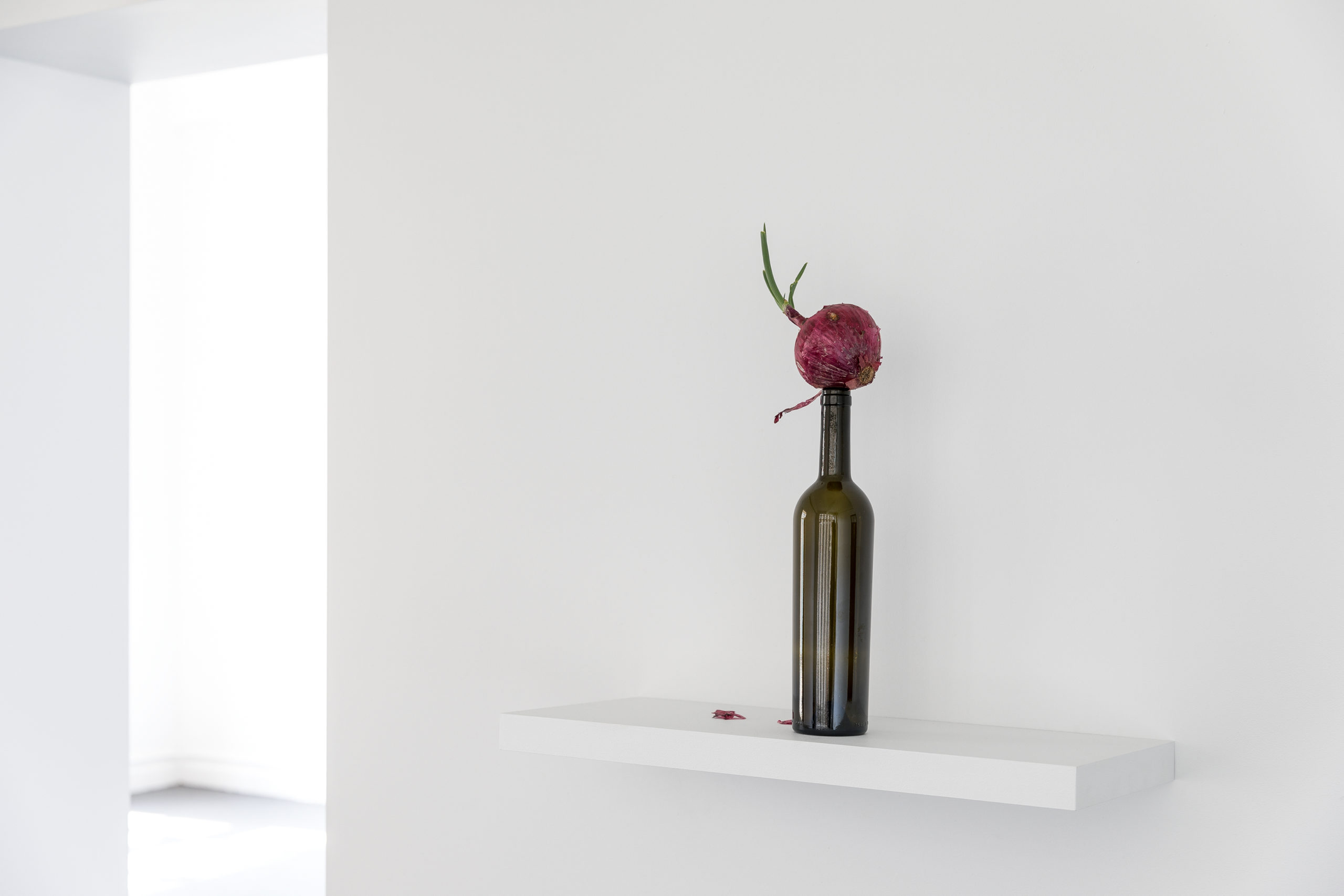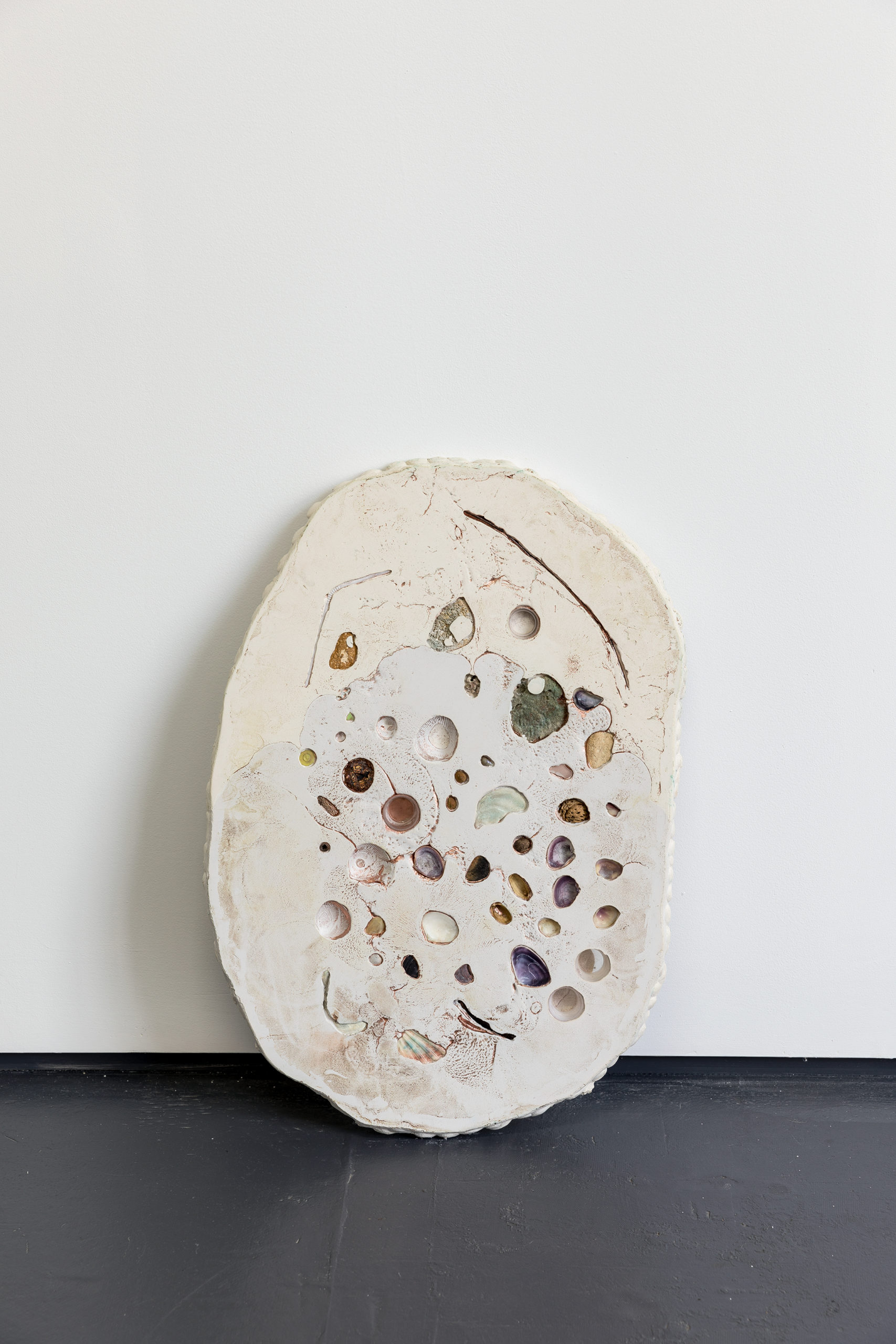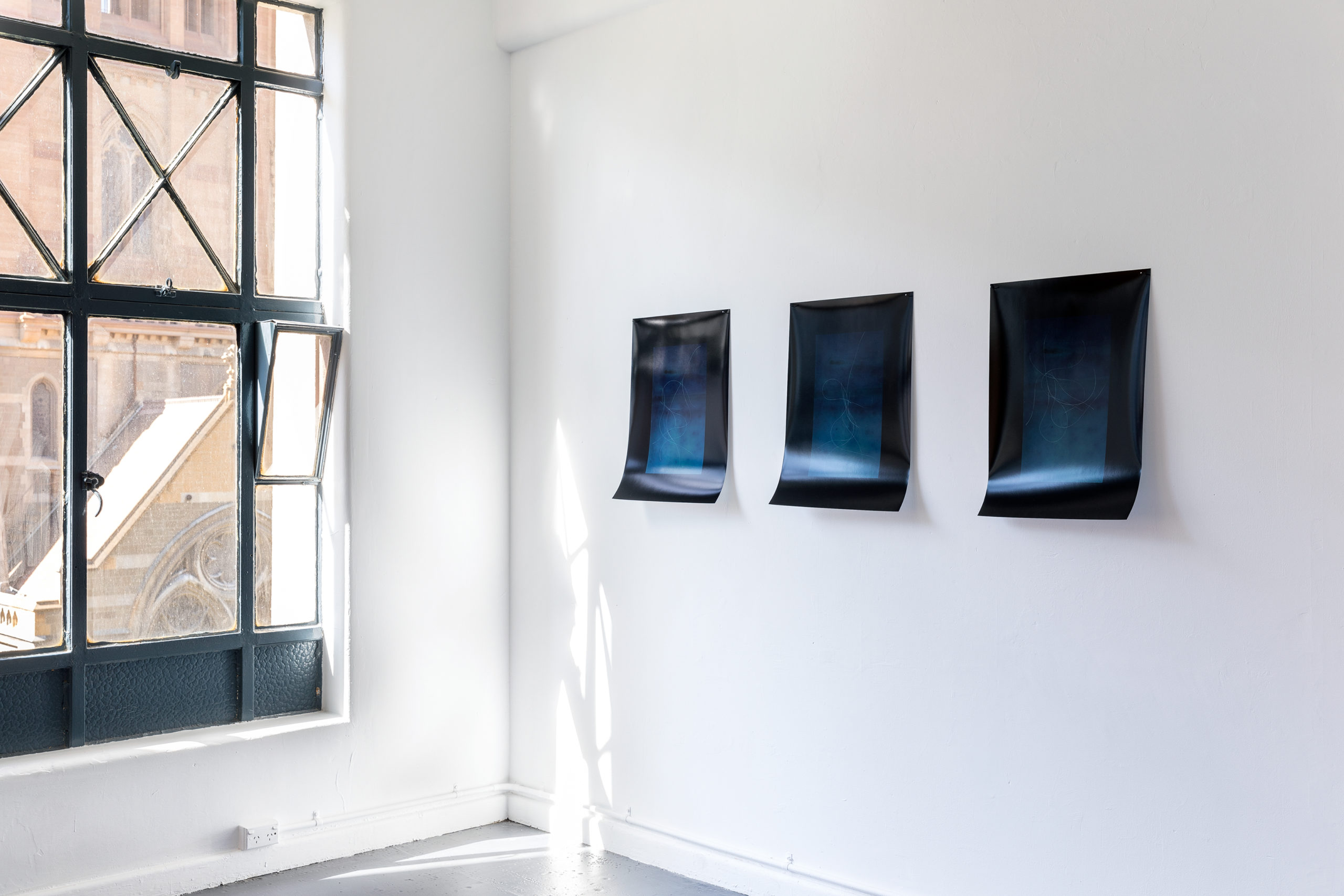Melbourne’s treasured Nicholas Building, located on the corner of Swanston Street and Flinders Lane, was designed by the commercial architect Harry Norris and built in 1926. The building is much loved for its many charming original details, and incorporates technology and influences that put it at the leading edge of its time. It has housed a broad range of businesses, but today is home to a cultural microcosm made up of creative innovators and retailers, art galleries and studios.
It is here that Olivia Radonich set up her new gallery Reading Room which opened for business in January 2018. Radonich’s partner Ed Davis had been looking for an office when a friend’s jewellery studio became available. It was too big, but on viewing the space, Radonich says her dream of opening a gallery was thrown into relief, “seeing the physical space made me realise things I had been thinking about; that it was time to put them into physical form.”
After a decade working at Tolarno Galleries in Melbourne, Radonich is keenly aware of the challenges she faces in stepping away from a big brand.
“It’s becoming complex for the next generation of gallerists,” she says. “In starting, art fairs are inevitable. It means that the market dominates. It can dominate your thinking.” Yet, Radonich is ready to test her mettle. She is aware of economic pressures, but unwilling to yield to them. “I would never be able to begin working with an artist based on commercial considerations… from experiences I’ve had, if you work with passion, with artists who are themselves passionate, and you believe in that artist, everything follows in time.”
Radonich takes courage from valuable lessons gleaned from mentors such as Tolarno Galleries director Jan Minchin. “It’s hard to work under a woman like Jan and not want to continue doing good,” she says. That good refers to supporting artistic process, and, to some extent, sheltering artists from the potentially crushing pressures of economic success. “I see it as a huge responsibility to create an environment and a space where artists can take risks that aren’t based on commercial outcomes,” Radonich explains. “That they can make the work they want to make. It’s my job to match their effort.”
Reading Room is made up of three rooms on the sixth floor of the Nicholas Building.
Striking wooden panelling dominates a wall in one room and generous industrial windows grace the rooms throughout. In between the two main exhibition spaces is the office-cum-library, which Davis also shares. Basically, it is not your standard white cube. “We wanted to be really respectful of the space and the building, which we love. We decided to keep the layout of the three rooms because it creates a nice situation, but it was very much done in close dialogue with the artists,” Radonich says.
Radonich has always loved being around artists and credits them with an ability “to feel out situations before the rest of us have realised what’s coming.” This is a quality she has placed her faith in, celebrating instances of such foresight both from a historical angle, as well as in navigating the gallery’s future. As though setting coordinates, Reading Room was launched earlier this year with Onion Walk,c. 1961, and News Animation* (Rehearsal), 2004, by the American-Italian postmodern choreographer (also dancer, artist, writer) Simone Forti.
Radonich became aware of Forti’s work four or five years ago through her writing and felt an immediate connection. She continued to research Forti’s oeuvre before approaching her gallery, The Box in Los Angeles, to see if they would put her in touch. Soon after, in 2017, she travelled to meet her to explain some of her thinking behind Reading Room and to invite Forti to exhibit. She wanted to inaugurate the space with Forti’s spirit, “her force.”
Throughout our conversation, Radonich is cautious of defining her project. She wants to give it the chance to evolve, to remain flexible and adaptive to unforeseen possibilities. Also, she wants attention to focus on her artists and believes “the work should go at the forefront.” Reading Room represents a small stable: Maggie Brink, Matlok Griffiths, Hannah Lees, Mary MacDougall and Lewis Teague Wright. But there are others whose work Radonich supports more informally, including so far: Simone Forti, Samraing Chea and Leahlani Johnson. In considering her selections, an interest in the ephemeral is a connecting thread.
Reading is a daily activity for Radonich, and the library component of Reading Room might be understood as the gallery’s sacred heart, made up from a selection of books from Radonich’s personal library. She is curious to see how other people interact with the space, with the books, and this ties in with one of the more playful ideas behind the gallery’s name. “I think we’re always reading in space, in the world,” Radonich says. “We’re reading bodies in space, especially where art is concerned, we’re always reading visual language.”
But the essential role of the library seems to be about forging connections. “The library arrangements are a very fluid, flexible idea. They really allow for an informal conversation to begin between me and an artist. And that conversation is very open, it can take any form,” Radonich explains. The first library arrangement features Sydney artist Leahlani Johnson, whose practice Radonich is only starting to get to know. It was the artist’s suggestion to present a series of her first porcelain works. She also spent time rearranging the books to a colour code, which Radonich describes happily as “a little disruption.”
Reading Room’s visual identity also stems from this interest in books and research. Radonich worked with Robert Milne, a graphic designer recently graduated from Werkplaats Typografie in The Netherlands, who shares her love of printed matter. This has led to the inclusion of many distinctive details: hole punch marks on each document produced to accompany exhibitions; a map-like room-sheet mirroring the layout of Samraing Chea’s exhibition; the inclusion of a colophon and footnotes on the website.
Radonich brings conceptual depth to her role which is evidenced in very deliberate decisions, such as the way information relating to her artists and exhibitions is communicated. “I don’t want the website to appear as this thing that has been created over the last year. I want the website to exist in parallel to the space itself, which is in formation.” Partly, this comes from what she has observed of chefs and the slow food movement. Radonich aims for “a mindful approach to the way a program forms, the way an exhibition is presented. Not so much hype before something is actually presented… let the viewer come to the work.”
Perhaps drawing on her love of art and quality literature – which is often said to raise more questions than answers, and might be equally measured by what is left unsaid – the only definitive statement Radonich seems comfortable making about her project is that it is “a proposition.” She goes on to explain, “It’s posing a series of questions and challenges to myself, as well, so I can test out the way forward. Working in a much smaller way, a more humble way, what can be achieved? What’s possible in that format? My artists are the ones who lead the way.”





